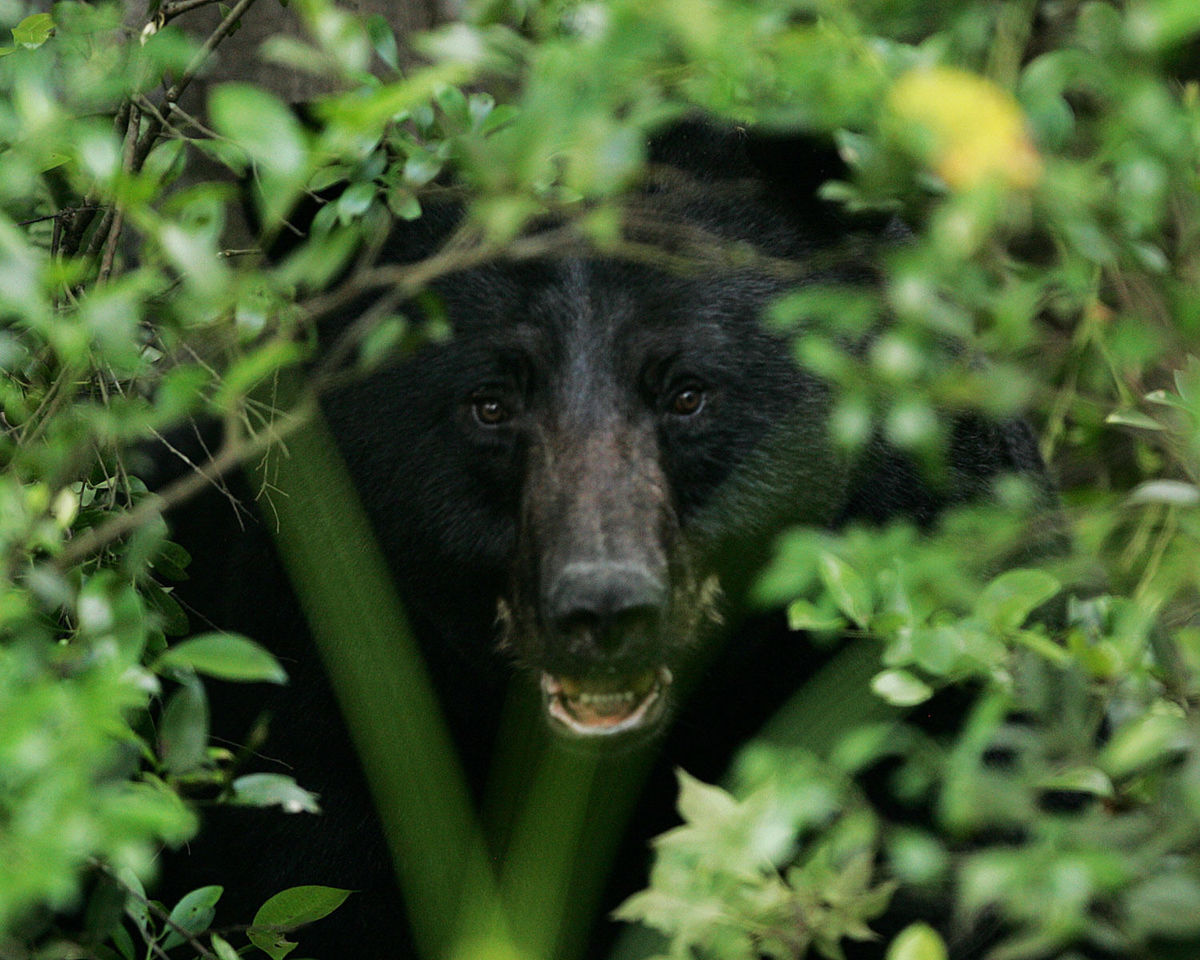
Photo courtesy of Auburn University
MONTGOMERY-Interaction between humans and black bears saw an uptick last year, and that will likely be the trend for the near future, at least in one corner of the state, according to Dr. Todd Steury of Auburn University.
Funded by the Alabama Department of Conservation and Natural Resource’s Wildlife and Freshwater Fisheries (WFF) Division’s State Wildlife Grants Program, Professor Steury, along with graduate students John Draper and Chris Seals, recently completed a multiple-year study of the black bear population in Alabama.
The basic conclusions were that Alabama has two populations of black bears, one in northeast Alabama and one in southwest Alabama, and each population has a different legacy as well as likely future.
The population in northeast Alabama, with roots from the mountains of northeast Georgia, has the potential for significant expansion. Hence, the likelihood that black bear sightings will become more common in the future.

Dr. Todd Steury of Auburn University
The population in southwest Alabama, which appears to be an encapsulated population, is relatively stagnant, but significantly more difficult to monitor.
“We think that most of Alabama, at one time, had black bears,” Steury said. “We believe two of the sub-species kind of met in Alabama, the American sub-species from the North and the Florida sub-species from the South. Of course, black bears were pretty much hunted to extinction in the state with one very small population remaining near Mobile.”
Steury said the Auburn study was prompted by the fact the black bears in the Mobile-Tensaw Delta hadn’t been studied since 1992 and by an increase in the number of bear sightings in the Little River area in northeast Alabama.
“In that study in the Delta in 1992, it was a very small population,” he said. “There was some concern about inbreeding because of how small it was. Part of our goal was to reexamine this population to see how they are doing. The other reason for the study was the increased sightings around Fort Payne, and we wanted to know if there is a viable population up there or just an occasional bear traveling through the area.”
 Bear sightings in Heflin and Oxford made headlines last year and prompted residents in those areas to voice concerns about the animals being close to public recreation areas.
Bear sightings in Heflin and Oxford made headlines last year and prompted residents in those areas to voice concerns about the animals being close to public recreation areas.
Steury said his team, which included Thomas Harms, WFF’s Large Carnivore Coordinator, used a variety of methods to gather bear data. The population density numbers were derived from a DNA study.
After all the data was collected, the analysis started. The results gave researchers population numbers, genetic diversity, points of origin and connections to other bear populations.
Steury said the DNA data indicated that the population in northeast Alabama more than doubled, going from about 12 bears to 30.
“We know those bears came from north Georgia,” he said. “We originally thought they might be from central Georgia around Macon, but the DNA showed they came right down the mountain from Georgia.”
The results from southwest Alabama were not as conclusive because of the requirements to meet the DNA profiling.
“We only got a good estimate from 2015,” Steury said. “We estimated there were 85 bears, but the estimate said there could be as many as 165. So it’s still a fairly small population. Obviously, that is not a great estimate, but we’d be very surprised if there are 200 bears down there. They seem to be very localized between Wagarville and Chatom and the Celeste Road area northwest of Saraland.
The story in northeast Alabama is that bears are finding suitable habitat to establish home ranges and expand the population.
“The bears are breeding,” Steury said of northeast Alabama. “We have seen numerous examples of sows with two or three cubs on our game cameras. We feel like the population there is going to grow, and there are still bears coming in from Georgia.
“We’re going to have more bears up there. There is lot of great habitat in Jackson County and Talladega National Forest. It’s just a matter of time for the population to expand.”
The prognosis for the southwest Alabama bear population is not so optimistic.
“The habitat in southwest Alabama is disappearing,” Steury said. “And, the population is not growing like it should. That is the next question we have to answer. We have some hypotheses. Those bears seem to be having good litters, but Chris is not seeing those cubs make it to adulthood. One of the aspects we’re exploring is den sites. When you think of bear dens in cold weather, what do you think about – caves or holes in the ground. In north Alabama, you’ve got bunches of caves or holes in the ground.
“In southwest Alabama, bears don’t have that. We will occasionally see denning in tree roots. What we see a lot of are nests. What we don’t know is how much protection from the elements and predators those really provide. Is the reason cubs are not making it to adulthood that they don’t have good dens?”
The other conclusion derived from the DNA studies is the connection of the specific populations with other populations in the Southeast.
“The northeast population is still pretty well connected with the north Georgia population,” Steury said. “The southern population does not appear to be connected with bears from Florida or western Mississippi. The DNA suggests there is basically no movement of bears into the southwest population. Bears come from Florida. We know because we track them. But they seem to get to the rivers in the Mobile-Tensaw Delta and turn around and go back.
 “We do catch and collar bears. The largest bear we have caught weighed 308 pounds. Chris said he has seen one that he estimates at 400 pounds. But most of our bears average 150 pounds.”
“We do catch and collar bears. The largest bear we have caught weighed 308 pounds. Chris said he has seen one that he estimates at 400 pounds. But most of our bears average 150 pounds.”
When it comes to bear-human interactions, Steury said a mailer was sent out to judge the public perception of bears.
“What we found out is that people like bears,” he said. “They want to have bears in Alabama. Generally, they were not supportive of lethal management controls except in extreme situations, where there was clear danger to people.”
Steury said it is rare when large predators do anything other than flee when they come in contact with humans.
“If they get into somebody’s food or people start feeding them, that’s when they become problems.”
Media Release/Alabama Department of Conservation and Natural Resources/ DAVID RAINER


